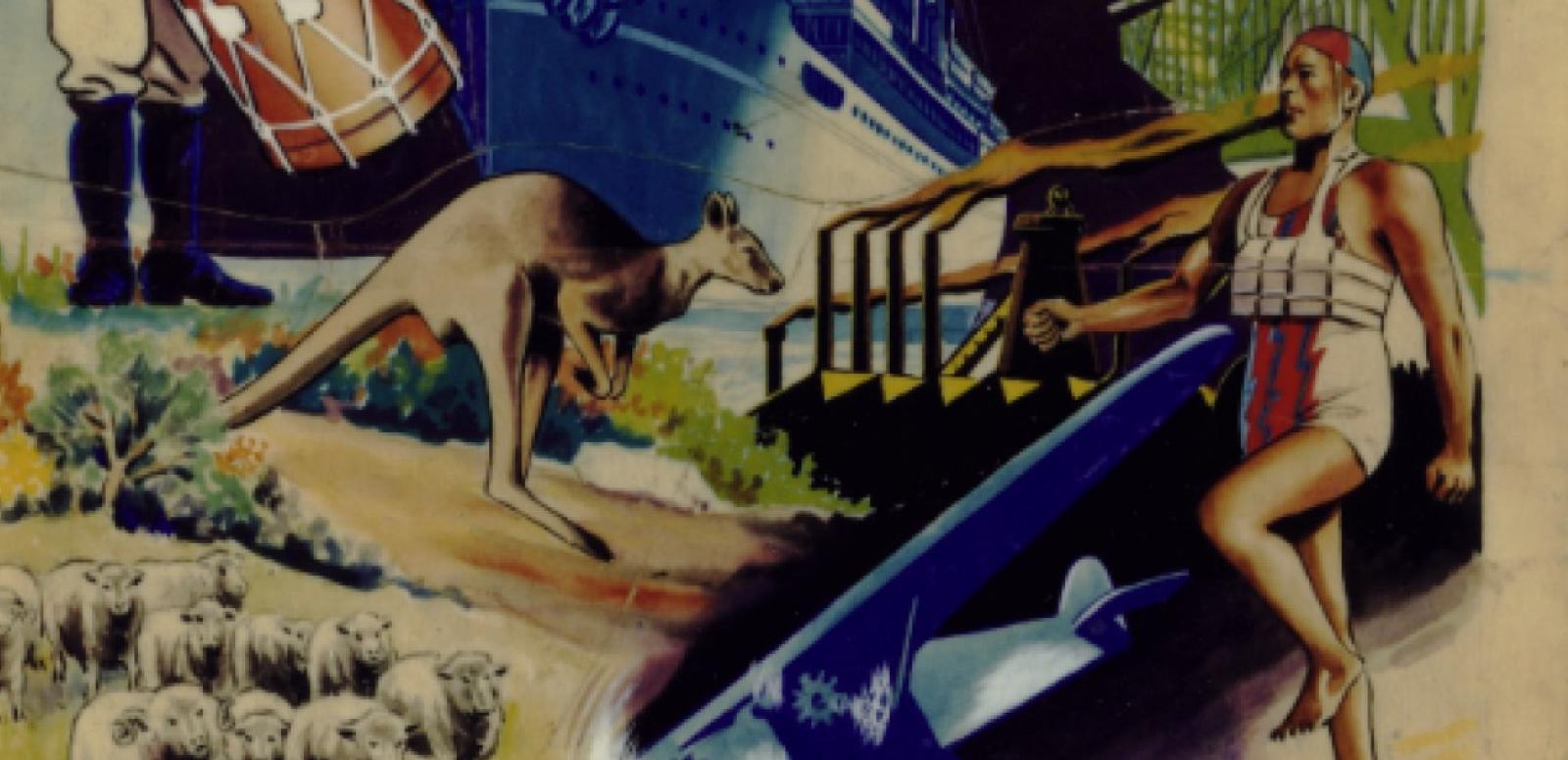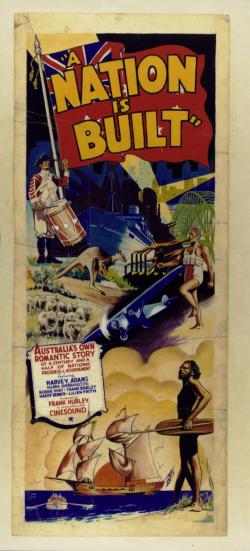Guest First Nations writer Nathan Sentance looks at how visual media has silenced the long, living history on these lands prior to European arrival.


Guest First Nations writer Nathan Sentance looks at how visual media has silenced the long, living history on these lands prior to European arrival.
'Like all cons
settler-colonialism
puts on a show
dazzles with its achievements the long march of its history'
– Ambelin Kwaymullina (Palyku), 2020 1
I remember watching a promotional video for a history conference I was set to attend in Perth, and it started with a colonial landscape painting of Perth with settlers in the foreground, the caption that overlaid it stating 'it all began in 1829', to which my thoughts were, 'What began? Massacres and dispossession.'
This video was just another example, like the James Cook statue in Hyde Park with the inscription 'Discovered this territory, 1770', of the silencing of the long, living history on these lands before European arrival. As well as the silencing of the destruction and violence that First Nations people had/have to endure as part of colonisation.
This silencing is not quiet, but very loud. The stories of First Nations families can hardly be heard because of people that are shouting over the top of them with their own stories of discovery, brave pioneers and savages that need to be civilised.
This shouting manifests itself through uncritical history communications, such as most colonial monuments and anniversaries or even in some older textbooks.
You end up not being able to hear history past the boisterous voices and the beating of chests. Which leads some, when they are confronted (if ever) with the brutal history that Australia was built upon, to ask 'why weren’t we told?'
Scene from the NSW Government-sponsored film A Nation is Built (Frank Hurley, 1938). NFSA title: 7586

And of course, visual media is and has been a part of this.
This is evidenced in Frank Hurley’s A Nation is Built which is a 1938 documentary sponsored by the government of New South Wales to celebrate the 150th anniversary of the arrival of the First Fleet to establish a penal colony on these lands now referred to as Australia.
As such, the film shows Australia’s 'development and progress' as a nation through images of firstly romanticised historical re-enactments, then through images of a bustling, vibrant Sydney city and of various industries.
All celebratory in tone and making no mention of the history of brutality First Nations face/d that is part of this 'development and progress', the economic oppression of First Nations people due to the dispossession of our land to make way for these industries.
The same year, 1938, Sydney was host to one of the first and largest First Nations civil rights protests – the Day of Mourning and Protest – in which organisers said of the celebration of the 150th anniversary, 'This festival of 150 years of so-called progress in Australia commemorates also 150 years of misery and degradation imposed upon the original native inhabitants by the white invaders of this country.’ 2
The disparity between the words and experiences of the First Nations people in attendance of the protest, and the images in A Nation is Built, would lead you to believe they happened in a different time and place – but that might be the point.
Actuality footage from a Sydney surf-lifesaving carnival. A Nation is Built (Frank Hurley, 1938). NFSA title: 7586
Fifty years later, the First Fleet’s arrival to lands now referred to as Australia was again celebrated.
This time with fanfare and fireworks across Australia, and a part of these celebrations was a 're-enactment' of the First Fleet’s arrival. And again, First Nations people all across the country came to Sydney to protest the celebrations, to stop the silencing, to try to bring awareness to oppression that affects First Nations people, to make noise that breaks through and disrupts the deafening sounds of colonial celebratory history.
Home movie footage of the re-enactment of the 1770 landing of Captain James Cook at Kurnell, NSW, during the celebrations of the bicentenary in 1970. Please note: this film is silent. Cinematographer: Nathan Cohan. NFSA title: 307446
A purely celebratory history leaves out many details. This is not a call to solely focus on the 'negative' but to focus on the truth. To search for sounds and stories attempted to be drowned.
History should be a tool to help us understand how we came to be, where we need to go and what we need to change. History should help us to understand how colonial oppressive structures were formed so we can collectively abolish them.
Nevertheless, this cannot happen unless challenging history is told, unless First Nations history is told. This is why the silencing is incredibly damaging. It creates the illusion of the past which in turn creates an illusion of the present. These illusions make it harder to see what needs to change.
This is a call to be critical of national self-love that does not allow counter points. To try and hear past the boisterous voices and the beating of chests. To question what are we celebrating and why?
'Listening
means learning to hear
the noise of settler-colonialism
inside your head
and all around you
to understand our voices
on our terms'
– Ambelin Kwaymullina (Palyku), 2020 3
1, 3 Kwaymullina, A, 2020. Living on stolen land. Broome, Western Australia: Magabala Books.
2 Dictionary of Sydney staff writer, Day of Mourning 1938, Dictionary of Sydney, 2008, viewed 16 May 2022.
Nathan 'mudyi' Sentance is a Wiradjuri librarian and creative history practitioner who grew up on Darkinjung Country and who writes about critical librarianship and critical museology. His writing has been previously published in The Guardian, Cordite Poetry, The Lifted Brow and Sydney Review of Books and on own his own blog, The Archival Decolonist.
Main image is a section from the daybill poster for A Nation is Built (Frank Hurley, 1938). NFSA title: 360655.
The National Film and Sound Archive of Australia acknowledges Australia’s Aboriginal and Torres Strait Islander peoples as the Traditional Custodians of the land on which we work and live and gives respect to their Elders both past and present.